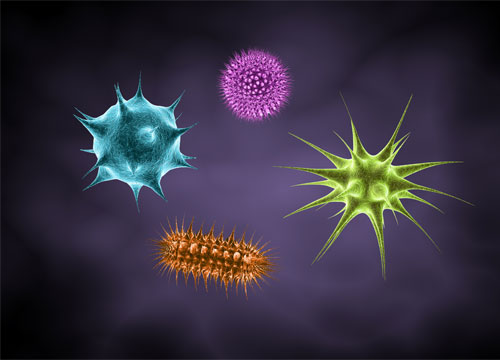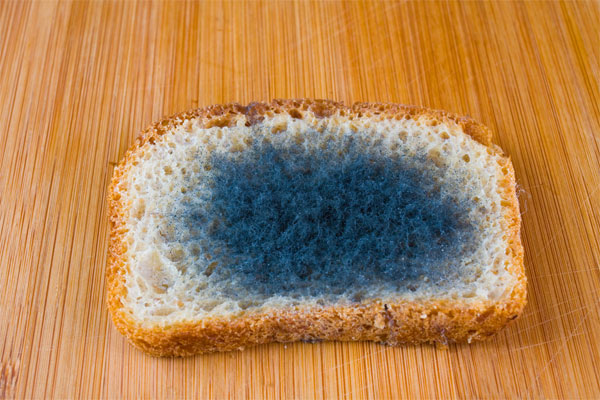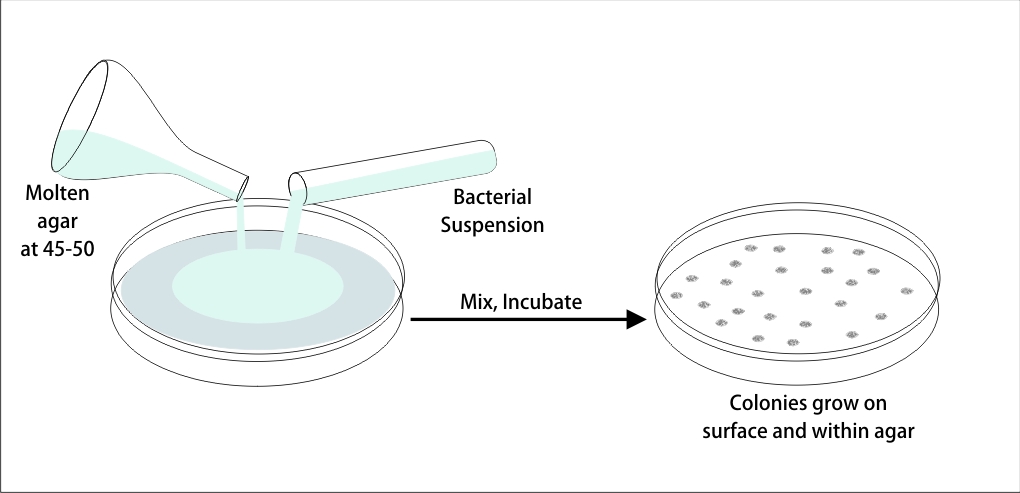Beneficial Role of Microorganisms in Food Industry


Microorganisms play an important role in food industry. As already discussed in the earlier article Contributions of Microbiology in Food Industry, they are used in production of various food products, and are also responsible for food spoilage thereby causing intoxication and diseases.
Microbial contamination of food products takes places usually on the way from the field to the processing plant, or during processing, storage, transport and distribution or before consumption.
Microorganism Growth and Food Spoilage
Different food products provide different growth conditions for microorganisms. Microbial growth is controlled by intrinsic factors like nutrients, pH, moisture content, the physical structure of the food and/or extrinsic factors like temperature, relative humidity, gases (CO2, O2).
Microorganisms thus grow in optimum conditions provided by the external and internal factors and result in spoilage and degradation of the food product resulting in a sour, foul-smelling or fungus-covered inedible mass.
Microbial growth in foods can also cause visible changes like change in colour, deposition of powdery growth, effervescences on the food surface, etc. Microbial contamination of food can occur at any point in the food production process: growth, harvesting, transport, storage, or final preparation.
Spoilage also can occur if foods are not stored properly. Meat and dairy products are rich in protein and fat serves as an ideal environment for microbial spoilage resulting in proteolysis and putrefaction of the food products. Vegetables and fruits have a much lower protein and fat content and undergo a different kind of spoilage.
Uses of Microorganisms in the Food Industry
Currently, more than 3500 traditionally fermented foods exist in the world. They are of animal or vegetable origin and are part of our daily life. Alcoholic drinks are not the only fermented drinks; cocoa beans, coffee grains and tea leaves are fermented after harvest in order to develop their typical flavour profiles.
Bacteria
Bacteria are the largest group of unicellular microorganisms. The shapes of medically important bacteria are classified into-cocci, or spherical cells; bacilli, or cylindrical or rod shaped cells; and spiral or curved forms. The pathogenic or disease causing bacteria are usually gram negative, however, three gram-positive rods are known to cause food intoxications : Clostridium botulinum,C. perfringens,and Bacillus cereus
Some of the other most common bacteria causing food spoilage, infections and disease are Acinetobacter, Aeromonas, Escherichia, Proteus, Alcaligenes, Flavobacterium, Pseudomonas, Arcobacter, Salmonella, Lactococcus, Serratia, Campylobacter, Shigella, Citrobacter, Listeria, Staphylococcus, Micrococcus, Corynebacterium, Vibrio Enterobacter, Paenibacillus, Weissella, Enterococcus, Yersinia
Different strains of bacteria are also used in production of various food and dairy products. Strains of Streptococcus, Lactobacillus Bifidobacterium, Erwiniaetc. are used in the production of fermented food and dairy products. Streptococcus thermophilus and Lactobacillusbulgaricus are used to produce yogurt.
Agriculture Food and Analytical Bacteriology
Analytical microbiology is a study, application and use of microorganisms as reagents for the quantitative determination of certain chemical compounds. These procedures are based on the reaction of a particular microorganism to its environment.
If a microorganism reacts with a measurable response to a certain chemical entity and yields a suitable result, then this analytical method for the quantitative estimation of the substance may be devised as per the requirements of food culture, fermentation or preservation.
Molds:
Molds are multicellular filamentous fungi whose growth on foods is usually readily recognized by their fuzzy or cottony appearance. They are mainly responsible for food spoilage at room temperature 25- 30oC and low pH, and have minimum moisture requirement.
Molds can rapidly grow on grains and corns when these products are stored under moist conditions. Molds require free oxygen for growth and hence grow on the surface of contaminated food.
Molds also find their use in manufacturing of different foods and food products. They are used in ripening of various types of food products as cheese (e.g. Roquefort,Camembert).
Molds are also grown as feed and food and are employed to produce ingredients such as enzymes like amylase used in making bread or citric acid used in soft drinks.
Molds are major contributors in the ripening of many oriental foods. A species of Bothrytiscinerea, is used in rotting of grape for production of wine. Lactic fermentations using molds results in a unique Finnish fermented milk called viili.
Yeasts:
Yeasts have the ability to ferment sugars to ethanol and carbon-dioxide and hence they are extensively in food industry. The most commonly used yeast, the baker’s yeast is grown industrially.
Saccharomyces carlsbergensis is most commonly used in fermentation of most beers. The other yeast strains of importance are Brettanomyces, Schizosaccharomyce,, Candida, Cryptococcus, Debaryomyces, Zygosaccharomyces, Hanseniaspora, Saccharomyces
Factors Affecting Growth of Microorganisms
To understand the uses of microorganisms in the food industry, it is imperative to understand how to use the microorganisms, as they tend to react differently in various conditions and environments.
- Removing or destroying them by trimming, washing, heating, pickling.
- Adding chemicals like acid or alcohol or by encouraging competition to form organisms.
- Minimizing contamination from raw or unprocessed food, people, equipment, and the environment.
- Minimizing microbial growth by cleaning and sanitizing the equipment (container etc).
- Adjusting storage pH, light penetration, temperature, and other environmental factors.
Although each of these factors affecting growth can happen separately, it might occur simultaneously in nature. When more than one condition is somewhat adverse to microbial growth, their inhibitory effects are cumulative.
Points to remember
- Bacteria, molds and yeast are the most important microorganisms that cause food spoilage and also find the maximum exploitation in production of food and food products.
- Different strains of bacteria and fungus are used for fermentation of dairy products for production of a wide variety of cultured milk products. Both bacteria and fungi are used in these cheese production processes.
- Lactic acid bacteria are used for coagulation of milk that can be processed to yield a wide variety of cheeses, including soft unripened, soft ripened, semisoft, hard, and very hard types.
- Microorganisms such as Lactobacillus and Bifidobacterium are used as in food and health industry.
- Spirulina, a cyanobacterium, also is a popular food source sold in specialty stores.
- Molds are used for rotting of grapes for production of different varieties of wines.
- Mushrooms (Agaricusbisporus) are one of the most important fungi used as a food source.
- Alcoholic beverages as beer are produced by fermentation of cereals and grains using different strains of yeasts.






Content,superb,delivery excellent.
Good job,very enlightening and educating.
Wouldn’t mind a supervisory advice from Dr Saxena fora PhD work.
Thank you Lab- training team.
Great website. Lots of useful information here. I am sending it to a few friends ans additionally sharing in delicious.
And certainly, thanks in your effort!
Hi,
How to download content from this website?Food Microbiology
It is simple. Click on About us in top menu on opening the site.Select free e-courses and sign up the dialog box below the course of your choice and submit. You will instantaneously get a link on your mail.Click on link and your request will be entered. You will receive the modules of the selected course after 3-4 days each.Thanks for your interest.
IT GIVES USEFUL POINTS
Very useful content. Thank you.
Giving useful points, Thanks much.
This lab training help me to learn more about micro organism
This is great information
thanks,the article was good
Thanks.
ok